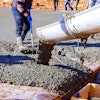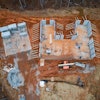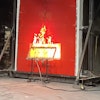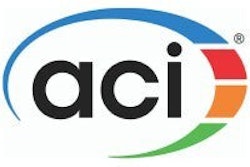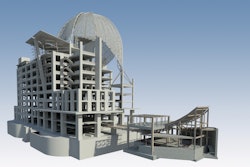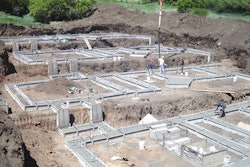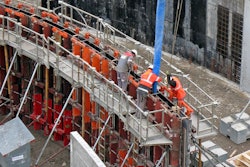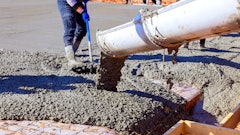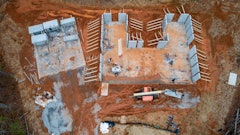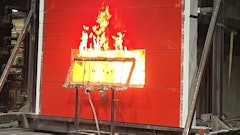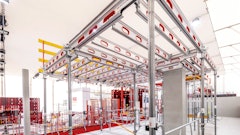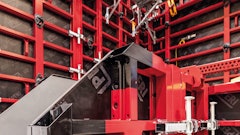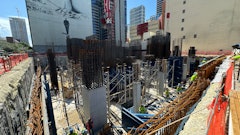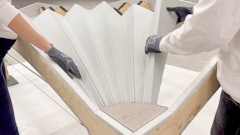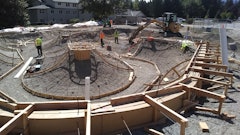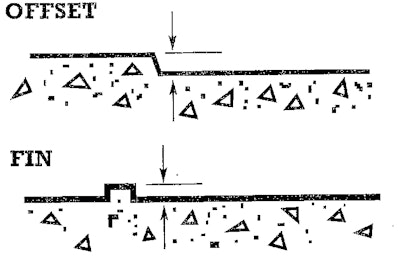
A concrete contractor recently had a close-out meeting with the Owner and Construction Manager, and was be surprised by the demand for a reduction in payment based on form leakage. The formed surfaces were acceptable as structural concrete. But the owners believed they paid for tight forms with no leakage, and the forms had indeed leaked. To strengthen their belief that no leakage should be expected, they cited Section 6.1.2 of ACI 318-11, “Building Code Requirements for Structural Concrete,” which states: “Forms shall be substantial and sufficiently tight to prevent leakage of mortar”. The Commentary for that section of ACI 318 refers to ACI 347 “Guide to Formwork for Concrete”.
What does ACI 347 say?
Chapter 5 in ACI 347-04 does state that:
- Ties should be tight fitting or tie holes in the form should be sealed to prevent leakage at the holes in the form.
- If textured surfaces are to be formed, ties should be carefully evaluated as to fit, pattern, grout
- , and aesthetics.
- Consideration should be given to re-anchoring forms in preceding or adjacent placements to achieve a tight fit and prevent grout leakage at these points.
- Corners should be carefully detailed to prevent grout leakage.
- Architectural concrete forms should be designed to resist water leakage and avoid discoloration.
But wait, Chapter 5 deals with Architectural Concrete – not structural concrete. ACI 347 recommends preventing leakage only for architectural concrete and not for structural concrete. Form leakage in architectural concrete could be an issue. But ACI 347 is not written in mandatory language, whereas ACI 301-10 “Specification for Structural Concrete” provides mandatory requirements for concrete contractors.
What does ACI 301 say?
Section 2, Formwork and Formwork Accessories, in ACI 301-10 states the following:
- Fabricate formwork joint tight to control loss of mortar from concrete.
- Formwork shall be tight to control loss of mortar from concrete.
- Ensure formwork is placed against hardened concrete so offsets at construction joints attain specified tolerances and minimize loss of mortar.
ACI 301 requires the contractor to “control” and “minimize,” not to prevent, loss of mortar from concrete.
Tolerances for form leakage for structural concrete?
Forms can leak at tie holes, at holes or patches in the forms, at form joints and at formed construction joints. Many contractors use manufactured panel forms with pre-made tie holes. There isn’t a tie in every hole and mortar leaks out at the empty tie holes. Wall and column forms are often placed on previously hardened concrete slabs that are not perfectly flat. Thus there are some gaps under the forms, and leakage will occur at these locations. Corners of both wall and column forms are also very difficult to get completely square and leakage will occur. In addition, leakage occurs between adjacent form pieces. But limits for allowable leakage on most structural concrete projects are controlled indirectly by specifications for tolerances and formed finish requirements.
For instance, ACI 117 “Standard Specifications for Tolerances for Concrete Construction and Materials” includes requirements for measurements of abrupt irregularities in formed surfaces. In ACI 347, fins or form offsets are considered to be abrupt irregularities. Why does ACI 117 include tolerances on fins, which are a result of form leakage, if form leakage is not permitted? And why does ACI 301 include form finish requirements that limit the height of fins if form leakage is not permitted?
ACI 301 is consistent, with specifications that control form leakage and requirements to limit the amount of form leakage. And if form leakage were to be prevented, there should be no tolerances on form leakage. But there are.
Look for help in ACI 318-14
Yes, form leakage for architectural concrete and for self-consolidating concrete is a concern. But form leakage for structural concrete does not need to be prevented when there are tolerances and form finish requirements that control it. And what might the newly reorganized ACI 318-14 say about form leakage? Interestingly, Section 26.11.1.2 of the ACI 318-14 draft for public review still has a form leakage provision, but substitutes the word inhibit for prevent, as follows:
“(c) Formwork shall be sufficiently tight to inhibit leakage of paste or mortar.”
The use of the word inhibit implies restraining, hindering, or arresting paste or mortar leakage—not preventing it. That change in wording should help contractors to counter frivolous claims by owners, or their representatives, that forms for structural concrete must be mortar tight.

